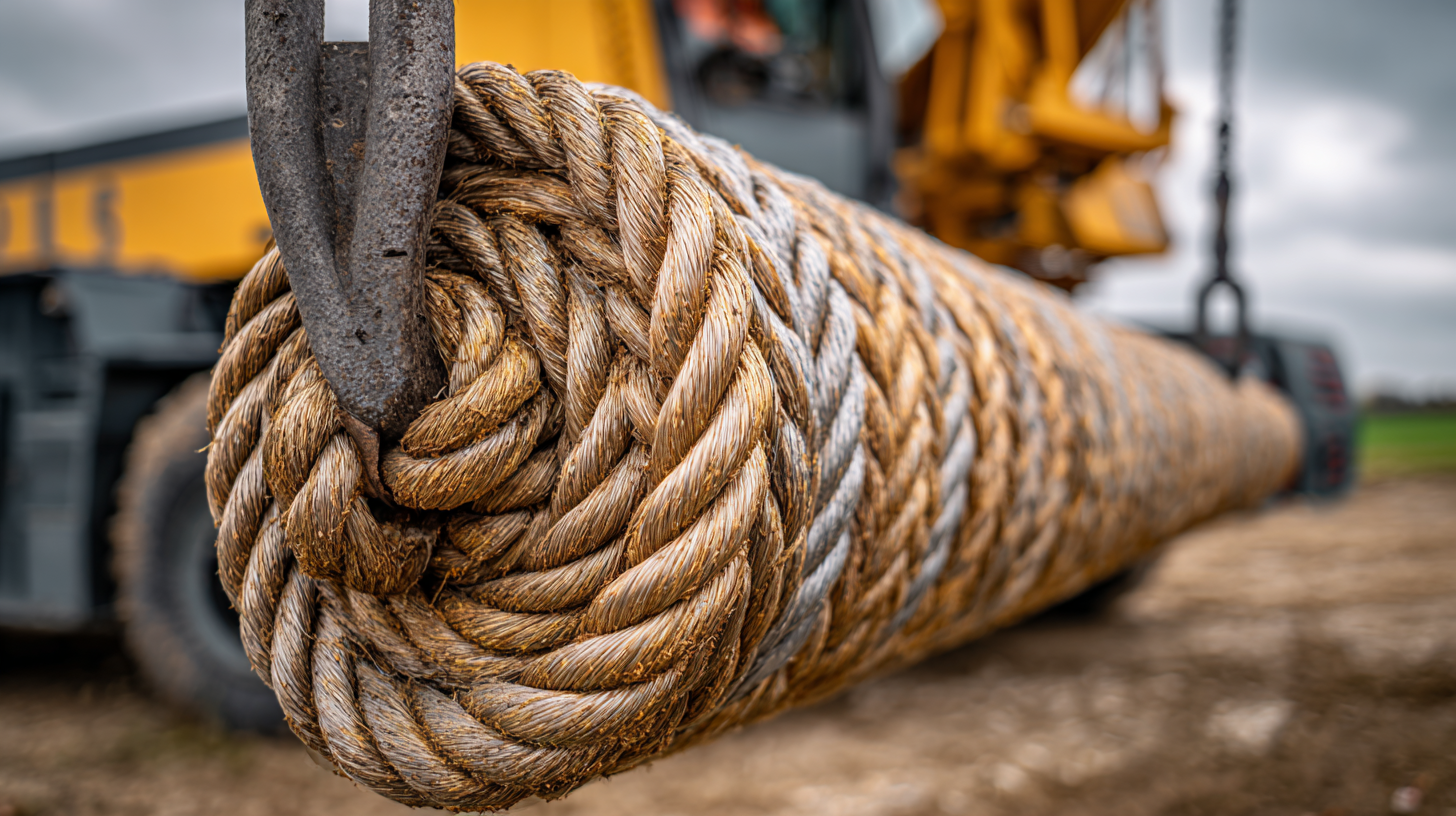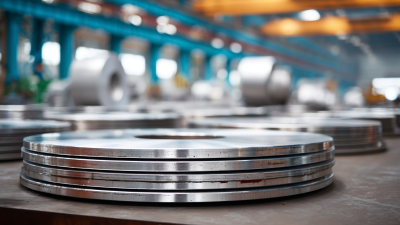Ultimate Guide to Choosing Lifting Rope for Cranes Boost Your Load Handling Efficiency
In the heavy lifting industry, the importance of selecting the right lifting rope for cranes cannot be overstated. As renowned expert and safety consultant, John Parker, once stated, "Choosing the appropriate lifting rope is crucial not just for operational efficiency but for ensuring the safety of every person on the site." This underscores the fact that the lifting rope serves as the backbone of any crane operation, impacting both load handling efficiency and overall workplace safety.
With a myriad of options available on the market, understanding the various types of lifting ropes and their unique properties is essential for making an informed decision. Factors such as tensile strength, weight, flexibility, and resistance to environmental conditions play a vital role in selecting the optimal lifting rope for cranes. In our ultimate guide, we will delve into the top ten considerations that every crane operator should keep in mind when choosing a lifting rope, ensuring that your lifting operations are not only efficient but also safe and reliable.

Factors to Consider When Selecting Lifting Ropes for Cranes
When selecting lifting ropes for cranes, several critical factors should be considered to enhance load handling efficiency. The tensile strength of the rope is paramount; it should be capable of supporting the maximum load without failure. According to the Association of Crane and Rigging Professionals (ACRP), ropes must have at least a 5:1 safety factor relative to the maximum load to avoid accidents. This ensures that even in the most demanding lifting applications, the rope maintains its integrity, thus safeguarding both the load and operational personnel.
Material type is another essential factor influencing the performance of lifting ropes. Common materials include synthetic fibers and steel wire. Steel wire ropes are renowned for their high strength and fatigue resistance, making them suitable for heavy loads and harsh environments. In contrast, synthetic fibers are lighter and offer excellent flexibility and resistance to abrasion, which is critical in applications requiring frequent movement. A study by the International Journal of Engineering Research & Technology highlights that using the appropriate material can increase lifting efficiencies by up to 20%, underlining the importance of material selection in optimizing crane operations.

Understanding Different Types of Lifting Ropes and Their Applications
When selecting the appropriate lifting rope for crane applications, it is essential to understand the various types of lifting ropes available and their specific uses.
Steel wire ropes are widely recognized for their strength and durability, making them a preferred choice in heavy lifting scenarios. According to industry reports, the steel wire rope market is projected to reach USD 13.88 billion by 2030, indicating a robust demand driven by the construction and mining sectors.
In the United States, there is a growing demand for surface contact wire ropes, which was valued at USD 84.4 million in 2025 and is anticipated to increase to USD 137.5 million by 2035. This rise can be attributed to their effectiveness in reducing wear on sheaves and drums, thereby enhancing overall load handling efficiency.
Selecting the right type of lifting rope based on specific operational needs not only ensures safety but also maximizes productivity in crane operations. Understanding these market trends and technological advancements can significantly influence businesses aiming to optimize their lifting solutions.
Evaluating Load Capacity and Safety Standards for Lifting Ropes
When selecting lifting ropes for cranes, understanding load capacity and adhering to safety standards are paramount for efficient load handling. Load capacity refers to the maximum weight that a rope can safely lift, which is determined by its material, diameter, and construction. It's essential to choose a rope with a capacity that exceeds the expected maximum load to account for dynamic forces and unforeseen circumstances during operation. Overloading a lifting rope can lead to catastrophic failures, jeopardizing both equipment and personnel safety.
Safety standards regulate factors such as testing protocols and material specifications to ensure the reliability of lifting ropes. Compliance with recognized standards, such as those set by the American Society of Mechanical Engineers (ASME) or the Occupational Safety and Health Administration (OSHA), guarantees that the ropes are manufactured and tested to withstand the demands of lifting operations. It's crucial for operators and safety managers to stay updated on these standards and routinely inspect lifting ropes for any signs of wear or damage, thereby enhancing safety and operational efficiency throughout the lifting process.
Load Capacity Comparison of Different Lifting Ropes
Tips for Maintaining and Inspecting Crane Lifting Ropes
When it comes to crane lifting operations, maintaining and inspecting lifting ropes is crucial for ensuring safety and efficiency. Regular inspections should be performed to check for signs of wear, such as fraying, kinking, or corrosion. These issues can severely compromise the integrity of the rope and lead to potential accidents. It is advisable to establish a routine inspection schedule that aligns with the manufacturer's guidelines and the specific demands of your lifting operations.
In addition to regular visual inspections, performing more in-depth assessments is essential. This includes checking for deformation or any irregularities in the rope structure, which can indicate underlying issues. Cleaning the rope frequently to remove dirt and grime can also help prolong its lifespan. Operators should be trained to recognize the common signs of damage and should document all findings to track the rope's condition over time. By following these maintenance practices, crane operators can enhance the reliability of their lifting operations and reduce the risk of equipment failure.
How to Choose the Right Accessories for Your Lifting Rope Setup
When selecting the right accessories for your lifting rope setup, it's crucial to consider the specific requirements of your operation. First and foremost, evaluate the type of load you will be handling and the environment in which the lifting will occur. Different accessories, such as hooks, slings, and pulleys, come with various load ratings and material compositions, each suited for specific applications. Ensure that all components are compatible with the rope type and rated for the same load capacity to avoid any safety hazards.

Additionally, take into account the ease of use and maintenance of the accessories. Features such as quick-release mechanisms and safety latches can significantly enhance operational efficiency and safety. Regular inspections and maintenance routines for these accessories help ensure they remain in optimal condition, reducing the risk of accidents. Investing in high-quality accessories that match your lifting rope will not only extend the lifespan of your equipment but also boost your overall load handling efficiency, ensuring smoother and safer operations.

Home
About Us
Products
Stainless Steel Anchor Chain
Manganese Steel Lifting Chain Grade 80
Manganese Steel Lifting Chain
Hastelloy Round Bars
Hastelloy Sheet
Hastelloy steel pipe
Stainless steel wire rope
Stainless steel round
Stainless steel hexagonal rod
Stainless steel strip
Plastic coating wire rope
Stainless steel plate
Stainless steel angle
Stainless steel pipe
Stainless steel wire
Stainless steel flange
Stainless steel channel
Stainless steel flat steel
Industries
News
Service
Blog
Contact Us








